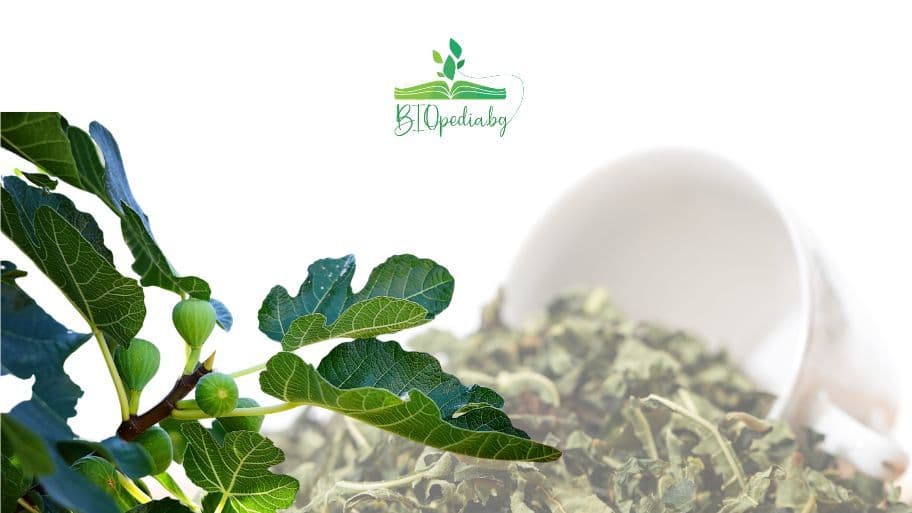When we talk about the Damascena Rose, we visualize magnificent colours and an unforgettable fragrance. This exceptional rose species, with roots steeped in the history and culture of the ancient East, is coveted today not only for its beauty but also for its valuable properties.
The essential oil extracted from the rose is used both in perfumery and aromatherapy, and its cultivation and harvesting have become a symbol of tradition, culture and true art.
But what is really behind the successful cultivation of Rosa damascena? How do the specialists care for it and what are their tricks and secrets?
In this Biopedia article, we'll look at the specifics of growing the Damascene Rose, give professional care tips, and find out why this plant is so prized around the world.
The origin of the Damascena Rose
The Damascena rose, also known as the rose of Castile, is an age-old symbol of sophistication and timeless beauty.
The first records of this type of rose are from the regions of ancient Persia and India. Ancient manuscripts from these regions mention the rose's aromatic and medicinal qualities.
The Crusaders are supposed to have brought the Damascene rose to Europe. It quickly found its place in European gardens, especially in France and England.
Centuries later, the rose found a second home in Bulgaria, especially in the Kazanlak Valley. Here, the favourable climatic conditions and soils are an ideal environment for growing the rose.

The Bulgarian Damascena rose became a major export product and gave rise to the rich tradition of Bulgarian rose oil.
Main characteristics of Rosa Damascena
Appearance of Rosa Damascena:
Rosa Damascena is a shrub up to 2 metres tall. Its flowers are light pink, although there may be darker or lighter variations.
Fragrance:
It is known for its intense and unique fragrance. For this reason, it is particularly valuable in the perfume industry.

Rosa Damascena blooms:
Blooms in late spring or early summer, and its flowers are usually double and dense.
Persistence:
Despite its lanky appearance, it is relatively disease and pest resistant, making it suitable for growing in a variety of climates.
Benefits of growing Rosa Damascena:
In addition to its use as an ornamental plant, the Damascena Rose is prized for its essential oil, which is used in cosmetics, perfumery and aromatherapy. The oil is also believed to have numerous health benefits.
Healing properties of Rosa Damascena
Damascena rose is known for a number of medicinal properties that have made it a desirable ingredient in many natural products and recipes.

Although it is widely used in perfumery and cosmetics, damask rose is also valued in alternative medicine. Here are some of its health benefits:
Antioxidant Properties of Damascena Rose
Damascena rose essential oil is a source of numerous antioxidants that help fight free radicals and protect the skin from premature aging.
Antiseptic and antimicrobial properties:
The rose water produced from it is often used to clean wounds and decontaminate the skin.
Relieve stress and anxiety with Damascena Rose:
The scent of rose is known for its calming qualities. Rose oil inhalation can help in relieving stress, anxiety and depression.

Aiding digestion:
In folk medicine, rose water has been used to relieve digestive problems and promote proper stomach functioning.
Soothing skin irritations with Rosa Damascena:
Rose water and Rose Damascena oil are great for soothing skin irritations, redness and inflammation.
Skin Hydration:
Cosmetic products with added rose oil or water provide deep hydration, leaving skin soft and radiant.
Damascena Rose Natural Toner:
Rose water acts as a natural toner that tightens pores and balances skin oiliness.

Rose Damascena varieties
Known for its many benefits, it also possesses several different varieties that impress with their beauty, fragrance and specific characteristics. Here are some of the most popular and common varieties of Damascena Rose:
Rosa Damascena 'Trigintipetala' (Kazanlak Rose): This variety is one of the most famous and is a symbol of the Bulgarian tradition of rose oil production. It has light pink flowers and a unique fragrance.
Rosa Damascena 'Semi-plena': This variety is popular for its semi-double, delicate pink flowers and highly fragrant hue.
Rose Damascena 'Alba': This rose features white or faint pink flowers and has a delicate, distinctive fragrance.

Damascena rose 'Versicolor' (York and Lancaster): This interesting variety combines white and pink shades in one colour. It is thought to have been hybridly produced.
Rose Damascena 'Bicolor': As the name suggests, this rose combines two different colours, usually pink and white, making each colour unique.
Damascena rose 'Celsiana': This variety is known for its large, soft pink flowers and relaxing fragrance.
Planting Damascena Rose
Planting Rosa Damascena requires attention to detail and advance preparation. Here are basic guidelines and steps to follow when you decide to plant it:

**Site selection: **Roses prefer sunny locations. Choose a spot in the garden that receives at least 6 hours of sunlight per day.
Soil preparation: Roses like well-drained, fertile soil. Enrich it with compost or organic fertiliser before planting. The soil should have a slightly acidic to neutral pH (around 6.5-7).
Spacing: Plant roses about 30-45 cm apart to allow sufficient room for growth and ventilation.
Planting: Make a hole large enough to accommodate the roots of the rose. Place in the hole so that where the roots meet the stem is at soil level or slightly below. Fill the hole with soil and tamp it down slightly.
Irrigate thoroughly with water after planting. Water regularly, especially in the first few weeks after planting.
Mulch: Apply a layer of mulch around the base of the rose to help conserve soil moisture and prevent weed growth.

Maintenance: These types of roses are relatively resistant to disease and pests, but regular check-ups and pruning help keep the plants healthy and beautiful.
Propagation MethodsPropagating the Damascena rose can be done by several basic methods. Here are a few of the most popular propagation methods:
**Propagation by cuttings: **This is one of the most popular methods. Cuttings are taken in summer from healthy, well-developed branches. They should be about 15-20 cm long and have at least two or three leaves. Place in a pot of moist soil or in a mixture of peat and perlite, and cover with a plastic bottle or foil to create a mini greenhouse. After root formation, the cuttings can be transplanted to a permanent location.

** Propagation by root suckers:** Some varieties of Rosa Damascena form root suckers which can be easily divided and transplanted to a new location.
Propagation by seed: Although a more laborious and time-consuming method, some gardeners prefer propagation by seed. These must be planted in the fall and usually germinate in the spring.
Propagation by grafting: This method uses two plants, a base (rootstock) and a top (graft). The tip of the Damascena rose is grafted onto the roots of another rose or rootstock, thus combining the strong qualities of both plants.

Pruning Damascena rose
Pruning the Damascena Rose is key to its healthy growth, profuse flowering and longevity. Proper pruning stimulates growth. Here are some pruning tips from the pros:
**When to prune: **The best time to prune Rosa Damascena is late winter or early spring, before the plant begins active growth.
Tools. It is a good idea to disinfect tools after each pruning, especially if you have cut away diseased or infected parts.

**How to prune: **Cut old, dead or damaged branches to the base. This will stimulate new growth. Also, prune short branches that are too long or intertwined. The aim is to form good ventilation between branches and prevent excessive shading.
**Cutting back the flowers: **After the rose has flowered, cut back the flowers that have overflowered. This will stimulate the rose to continue forming new flowers and prevent seed formation, which takes energy from the plant.
Shape: When pruning, aim for an open and well-ventilated shape. This helps to prevent diseases such as rot and fungi, which love enclosed and damp conditions.
Fertilizing Damascena rose
Fertilizing is a vital procedure for maintaining the healthy growth and abundant blooms of Rosa Damascena. Roses are known for their high nutrient requirements, and proper fertilization can be the difference between a well-growing rose and one that lags behind.
The main macronutrients needed by roses are nitrogen (N), phosphorus (P) and potassium (K). Each of these elements supports different aspects of growth: **Nitrogen (N) **- stimulates leaf and stem growth.Phosphorus (P) - promotes root growth and flower formation.Potassium (K) - strengthens cell walls, increasing plant resistance to stress and disease.

When to fertilise Damascena Rose:
Early spring is the ideal period for the first fertilization, when roses begin their active growth. Subsequent fertilizations can be applied in summer, especially if you notice that the plant needs additional nutrients.
Types of fertiliser:
Organic fertilizers, such as compost, provides a gradual release of nutrients and improves soil structure.
**Chemical fertilizers** offer fast-acting nutrients and are readily available. Choose formulas specifically developed for roses.
Fertilizing techniques for Rosa Damascena
You can use surface fertilization, where cake is spread over the soil surface, or broadcast fertilization, where cake is applied at a greater depth, close to the roots.
Diseases and pests of Rosa damascena
The Damascena Rose, despite its beauty and fragrance, is not excluded from the list of plants that can be attacked by various diseases and pests.
Recognizing these problems and preventing and treating them in a timely manner is key to keeping the rose in its best shape.
Diseases of the Damascena Rose:
Black spot on roses (Diplocarpon rosae): This is one of the most common diseases of roses. The leaves show dark, almost black spots followed by yellowing and dropping.
**Rust: **Orange or yellow bulges on the underside of the leaves that turn into red or black spots.
Downy mildew: A thin white layer on leaves, stems and stipules that can cause leaf drop.
Pests of Rosa damascena:
Aphids: Small, green or black insects that feed on plant juices, causing leaf drop and yellowing.
**Rose maggot: **Insects that attack the roots of young roses. Prevention and control:
Regular inspections: Check your roses regularly for signs of disease or pests.
Good Hygiene: Remove and destroy fallen or infected leaves and branches.
**Biological control: **Use beneficial insects such as bugs or spider mites to control aphids.
**Chemicals: **If biological control is not effective, consider using specific insecticides or fungicides, but always follow package directions.
Providing proper care, including proper watering, fertilizing and pruning, will promote healthy growth of the rose and reduce the likelihood of disease and pests.





Comments